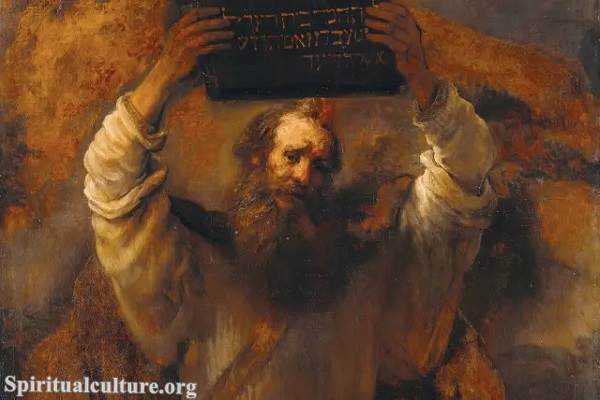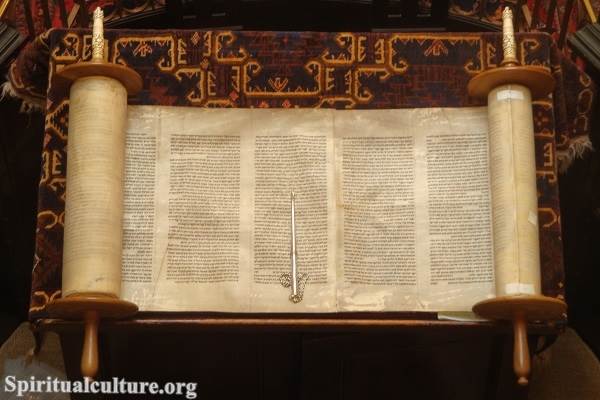Time, in the Jewish tradition, is not just a sequence of moments ticking forward. It is a sacred spiral — always circling back to meaning, memory, and divine rhythm. The Jewish calendar is more than a method of marking months; it is a soul-map, aligning earthly life with eternal truth. Every holiday, every new moon, every Sabbath is not merely a date — it is an invitation.
In this article, Spiritual Culture invites you to explore the profound beauty of the Jewish calendar. What makes it different from the solar Gregorian calendar? How does it hold the heartbeat of an ancient people still breathing faith today? And why is time itself considered holy in Judaism?
Let’s journey through the seasons of sacred time — and discover how the Jewish calendar weaves eternity into every day.
The Foundations of the Jewish Calendar
A Lunisolar Harmony: The Calendar’s Structure
The Jewish calendar is a lunisolar system — one of the most complex yet spiritually resonant ways of keeping time. Unlike the Gregorian calendar, which is based purely on the solar cycle, the Jewish calendar draws from both the moon and the sun.
Lunar Months, Solar Years
- Each month begins with the new moon, marking Rosh Chodesh (“head of the month”).
- Twelve lunar months (each about 29.5 days) fall short of a solar year by about 11 days.
- To reconcile this gap, a leap month (Adar II) is added in 7 out of every 19 years — a cycle known as the Metonic cycle.
This elegant adjustment ensures that festivals stay in their proper seasons — Passover always in spring, Sukkot in autumn. The balance of lunar and solar elements reflects Judaism’s integration of earthly rhythms with divine order.
Sacred Numbers and Patterns
The number seven saturates the Jewish calendar:
- Every 7th day: Shabbat (Sabbath)
- Every 7th year: Shemitah (Sabbatical Year)
- Every 7 x 7 years: Jubilee (Yovel)
- The Omer count: 49 days (7 weeks) from Passover to Shavuot
These cycles are not arbitrary. They reflect the Torah’s symbolic use of seven as a number of completeness, covenant, and divine wholeness. Time, in Judaism, is not a random sequence but a spiritual architecture designed for encounter.
Shabbat: The Weekly Pillar of Sacred Time
A Temple in Time
The Jewish philosopher Abraham Joshua Heschel called Shabbat “a sanctuary in time.” While physical temples may be destroyed, time itself remains a place to meet the Divine.
Ceasing to Become
Every seventh day, from Friday evening to Saturday night, Jews enter a realm of rest, reflection, and restoration. The act of ceasing from work (melacha) is not about restriction but liberation — stepping off the treadmill of productivity to remember that we are more than what we do.
As the Torah declares:
“Six days you shall labor and do all your work, but the seventh day is a Sabbath to the Lord your God…”
(Exodus 20:9–10)
Shabbat is not just a pause — it is the soul’s return to who we are in the eyes of God.
The Cycle of the Year: Jewish Festivals as Sacred Markers
The Jewish calendar is punctuated by festivals that mark both historical events and spiritual truths. Each festival is more than a remembrance — it is a re-living.
Spring: The Season of Redemption
Passover (Pesach)
- Theme: Freedom from slavery in Egypt
- Timing: 15th of Nisan (March/April)
- Rituals: Seder meal, matzah, storytelling
Passover is the Jewish New Year of national identity. More than a historical event, it is a yearly awakening of liberation — political, spiritual, and personal.
“In every generation, a person must regard himself as though he personally had gone out from Egypt.”
(Passover Haggadah)
Counting the Omer and Shavuot
From Passover begins the counting of the Omer — 49 days of spiritual ascent toward Shavuot, the giving of the Torah at Sinai.
- Shavuot (Feast of Weeks) marks the covenant between God and Israel.
- It is a celebration of revelation, learning, and responsibility.
Fall: The Season of Awe and Return
Rosh Hashanah (New Year)
- Theme: Divine kingship and renewal
- Symbol: Shofar (ram’s horn)
- A time for introspection, soul-searching, and setting intentions.
Yom Kippur (Day of Atonement)
- The holiest day of the year — a fast of the body and awakening of the heart.
- A full day of repentance, confession, and pleading for forgiveness.
“For on this day He shall provide atonement for you to cleanse you; from all your sins before the Lord you shall be cleansed.”
(Leviticus 16:30)
Sukkot (Feast of Booths)
- Theme: Trust in divine protection during the wilderness journey
- Practice: Living in a temporary hut (sukkah), waving the Four Species
This harvest festival celebrates both the fragility and the fullness of life. It ends with Simchat Torah, a joyful dance with the scrolls — celebrating the never-ending cycle of learning.
Other Markers of Sacred Time
Hanukkah: Light in the Darkness
Celebrated in Kislev (November/December), Hanukkah commemorates the miraculous victory of the Maccabees and the rededication of the Temple. Its eight nights of lights symbolize faith’s endurance through exile and oppression.
Purim: Hidden Miracles
Held in Adar (February/March), Purim celebrates the story of Esther, in which God’s name is never mentioned — reminding us that divine providence can work behind the scenes. It is a day of joy, costumes, gifts, and reading the Megillah (Scroll of Esther).
Rosh Chodesh: Monthly Renewal
Each new moon ushers in Rosh Chodesh, a minor holiday celebrated with special prayers and Torah readings. It honors the feminine rhythm of renewal and is a time to reflect, reset, and align oneself spiritually.
In ancient times, women especially cherished this day. According to Midrash, they were rewarded with this time of celebration for refusing to participate in the sin of the Golden Calf.
A Calendar of the Soul
The Jewish calendar is not only about marking events but shaping souls. It brings structure to the year — but more profoundly, it brings meaning to the moment.
Time as a Spiral, Not a Line
In Jewish thought, time is not linear, but cyclical with ascent. Each year we return to the same holidays, but on a higher plane. We revisit Passover, but with new awareness. We hear the shofar again, but with deeper repentance. Like a spiral staircase, each turn brings us closer to spiritual maturity.
Memory, Identity, and Hope
By remembering — actively, ritually, communally — Jews remain connected to their past, grounded in their present, and hopeful for their future.
“Remember the days of old, consider the years of many generations…”
(Deuteronomy 32:7)
Time is not something to escape or endure. It is something to sanctify.
Reflect and Reimagine
The Jewish calendar teaches us that time is not neutral — it is sacred. It reminds us that every week has a heartbeat, every month a chance to begin again, every year a story waiting to be re-lived.
What if we saw our calendars not just as planners, but as paths to the divine?
Whether you are Jewish or not, the rhythm of sacred time can awaken something universal in all of us — the longing to live with purpose, to remember who we are, and to step in rhythm with the eternal.
Take a moment this week to pause, to notice the moon, to remember an ancient story, to light a candle — and feel time transformed into something holy.
Spiritual Culture invites you:
Let your time be more than routine.
Let it become a rhythm of meaning.
A sacred dance between the soul and the seasons.


